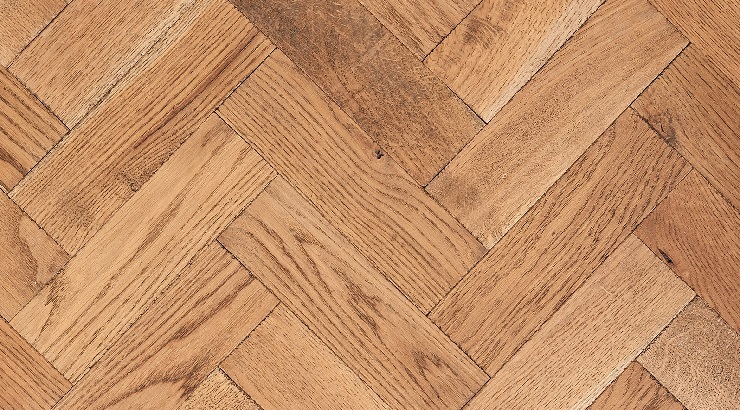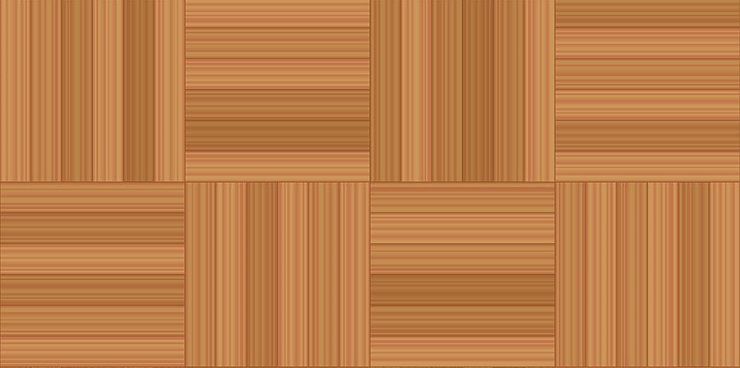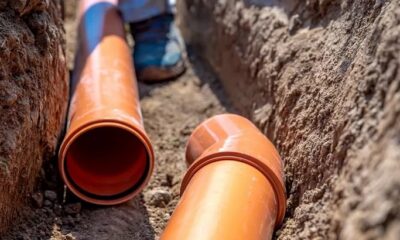Features
Hardwood Parquet Flooring
Discover the allure and timeless elegance of parquet flooring.

What is hardwood parquet flooring?
To define hardwood parquet flooring, let us begin by describing parquet—a flooring made of small, geometrically set wood pieces forming intricate patterns.
Hardwood parquet flooring, therefore, is a type of floor that uses solid hardwood pieces to create durable and visually appealing interior surfaces.
Unlike the old-style method of fitting parquet piece by piece, modern parquet floors are often available in tile form with wood slats adhered to a backing material.
Installation of parquet tile flooring involves adhering the tiles to the subfloor through gluing, nailing, or stapling.
Due to the hardwood nature of the parquet strips, this flooring closely resembles traditional solid-hardwood strip flooring, both in appearance and performance.
Parquet flooring composition
Hardwood parquet flooring is composed of narrow hardwood strips, either joined directly to the floor to create a pattern or installed as prefinished parquet-style tiles.
Common tiles sizes include:
- 9×9 inches
- 12×12 inches
- 19×19 inches
Parquet tiles vary in thickness from 5/16 inch to 3/4 inch.
They often feature a mesh backing made of paper, cloth, or plastic, stitched with a thin metal or plastic skeleton.
The primary hardwood layer is typically oak, although it can also be made of maple, walnut, or other popular hardwood species.
Pros and cons of parquet flooring
Pros
Wood selection: A wide variety of wood species is available for you to choose from when creating your parquet floor design.
Easy to install: Parquet strips and tiles are thin and easy to cut, and can be arranged and glued onto a flat subfloor, eliminating the need for nails.
Visual appeal: Parquet flooring has a sophisticated and bold character that makes it a popular choice for living rooms, dining rooms, and foyers.
RELATED: 11 Types of Wood for Floors and Furniture
Long-lasting: Hardwood parquet exhibits enduring structural integrity, maintaining its aesthetic appeal and strength for decades to come.
Low-maintenance: Hardwood parquet flooring maintains its quality over time, requiring minimal upkeep for enduring beauty.
Cons
Potentially old-fashioned look: When selling your home, potential buyers might view parquet as an outdated design, posing challenges in convincing them to buy.
It can get busy: The geometric patterns of parquet may appear overly busy and overwhelming in smaller spaces, such as kitchens and bathrooms.
Prone to marks: Parquet floors are prone to easy scratching and scuffing, and these marks can be challenging to buff out.
Damage in damp spaces: In damp environments or below-grade basements, parquet is susceptible to warping and other issues.
Refinishing and repairs can be tough: Refinishing wood parquet is challenging due to alternating grain directions. On the other hand, repairing it involves standard hardwood floor treatments like sanding, wood fillers, and colorants.
RELATED: Popular Flooring Materials for Modern Homes
Types of parquet floor designs
Here are the most popular parquet patterns:
Mosaic or brick: Equal-sized thin wood strips form individual squares, which are then arranged adjacent to one another to create a pattern.

Herringbone: Zigzag pattern created by arranging rectangular blocks or planks with straight ends.
Basketweave: Wood planks seem interwoven, creating a visual resemblance to a woven basket as they alternate under and over each other.
Versailles: Wood strips woven in a diamond-shaped pattern.
Chevron: Zigzag pattern created with planks featuring ends angled at 45 degrees to achieve a true V-shape.
Checkerboard: Wood strips arranged to form cubes, resulting in a checkerboard pattern.
Refinishing a parquet floor
Parquet, often made of hardwood, allows for sanding and refinishing. Some parquet tiles can be refinished as often as hardwood plank flooring of comparable thickness.
Nevertheless, refinishing parquet floors is not as straightforward as regular hardwood planking due to the lack of consistent grain orientation.
The small slats of wood may be directed in various directions, causing cross-grain scratching that can be challenging to buff out.
In some areas, hand sanding may be necessary to achieve a smooth surface.












